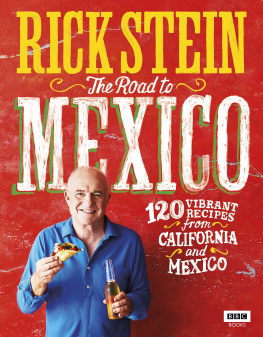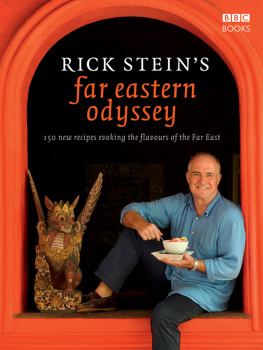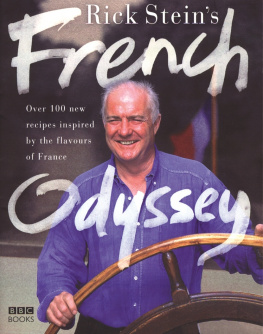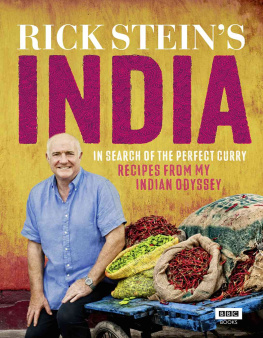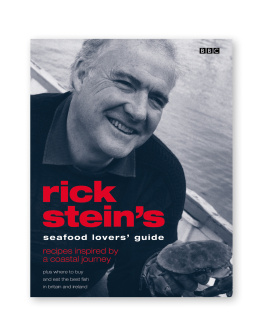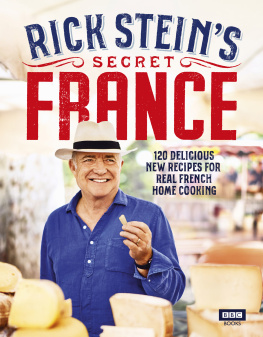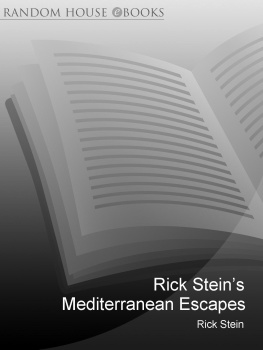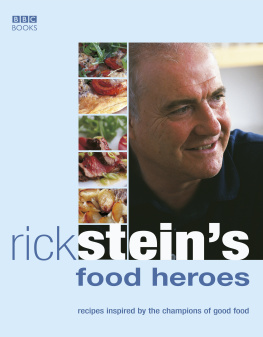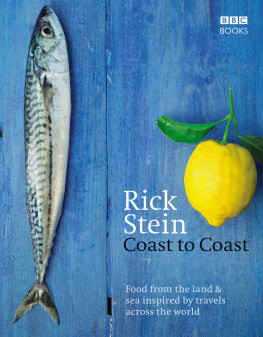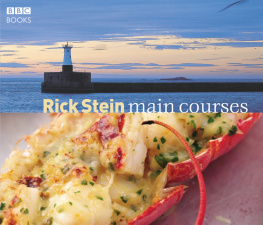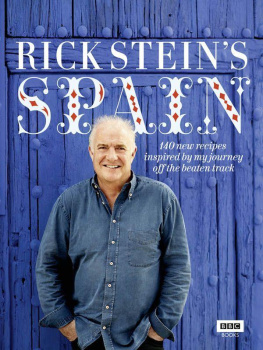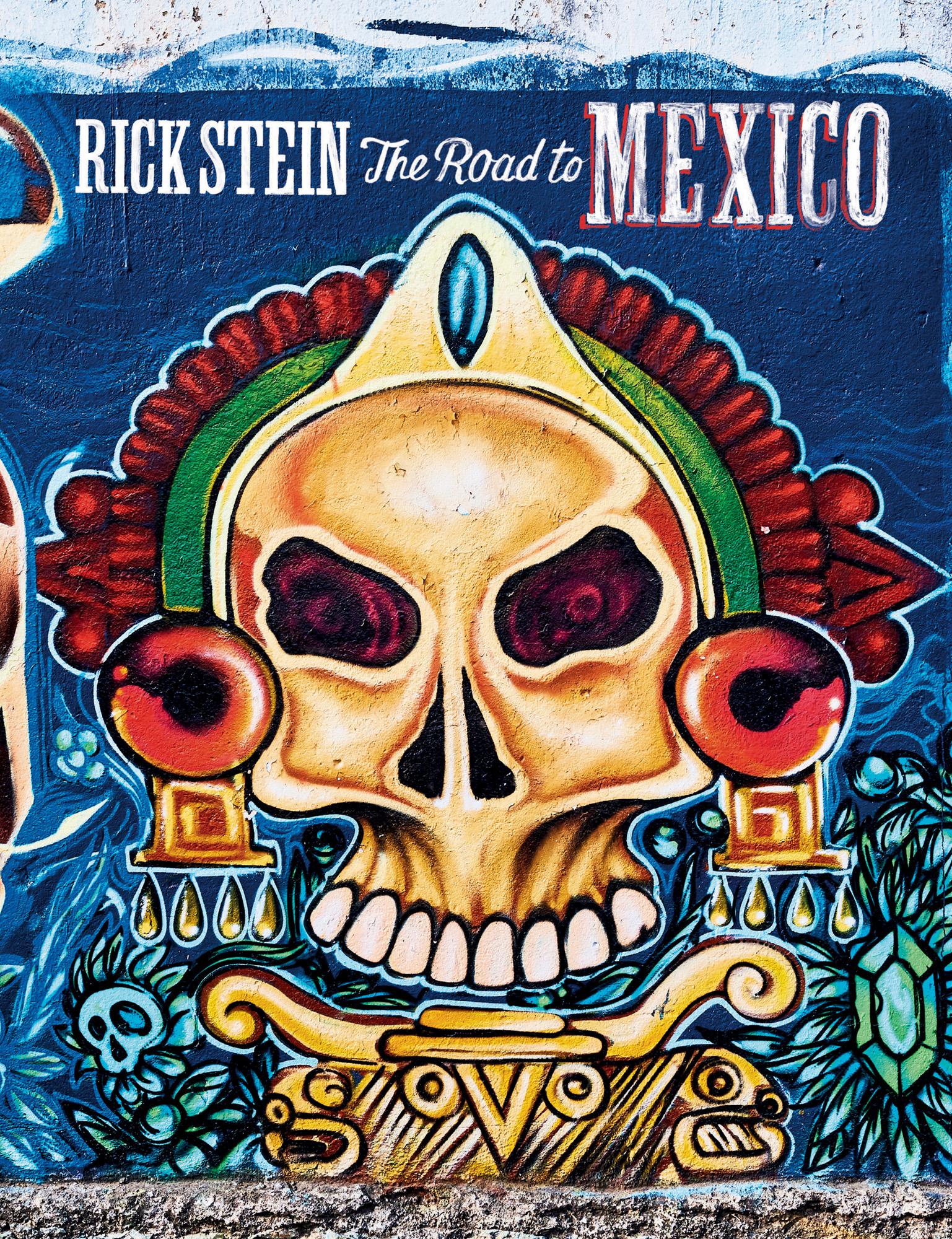CONTENTS
ABOUT THE BOOK
Starting in San Francisco and Baja California, and working his way down to the tip of Mexico, Rick Stein cooks, eats and experiences food at its very best and most diverse.
Whether its the farmers markets of California, full of sourdough bread, new season garlic and a profusion of citrus fruit; the prawns, snapper and tuna of the Pacific or the glorious street food and colourful markets of Mexico with their avocados, chillies, tomatillos, cheese and corn, this is a part of the world packed with natural, healthy and satisfying ingredients.
Showcasing Ricks authentic style, with recipes like Ensenada Fish Tacos with Chilli, Deep Fried Coconut Prawns and Slow Cooked Pork Tacos, this cookbook will encourage anyone to try out the bold food of these sunshine states.
ABOUT THE AUTHOR
Rick Steins passion for using good-quality local produce and his talent for creating delicious flavour combinations in his books and restaurants have won him a host of awards, accolades and fans. As well as presenting a number of television series, he has published many best-selling cookery books, including French Odyssey, Coast to Coast, Far Eastern Odyssey, Rick Steins Spain, Rick Steins India, From Venice to Istanbul and Rick Steins Long Weekends.
Rick has always believed in showcasing local seafood and farm produce in his four restaurants in Padstow, Cornwall, where he also has a seafood cookery school, food shops and a pub in the nearby village of St Merryn. In 2003 Rick was awarded an OBE for services to West Country tourism. He divides his time between Padstow, London and Australia, where he also has a seafood restaurant by the sea in Mollymook, NSW.
This book is dedicated to Ed, Jack and Charlie and Sas, Zach and Olive
INTRODUCTION
I first went to Mexico in 1968. I crossed the border from the USA at Nuevo Laredo and headed for the city of Monterrey. That night in a taquera I ordered some tacos. I didnt know what they were; I just pointed to some locals eating them and asked to have the same. The tacos were filled with some cooked meat, I think it was pork, and came with chopped tomatoes, onions, green peppers, which were in fact chillies, and a herb I later realised was coriander. There were slices of lime alongside and a bowl of orange-red sauce. Its no exaggeration to say that this meal changed my life. My memory is of the sourness of the lime, the freshness and heat of the salad and the red salsa, a comforting mouthful of salty, spicy pork and the warm alkaline smell and taste of corn tortillas. I had never tasted anything so vivid, so demanding, so exciting. It was like listening to Little Richards Tutti Frutti for the first time, so loud and immediate, a brief and delicious assault on the senses, leaving you wanting more.
The next morning, after a night in a really rough hotel, I took a bus to the outskirts of town and started to walk, looking to hitch a ride to Ciudad Victoria and Tampico. It was early and cold but sunny, with a smell of just-lit charcoal in the air. I went into a little breakfast place where I could see people eating and again pointed to a plate of food. This time it was fried eggs with tortillas under them and the same sort of hot red sauce as Id had the night before poured over the top. I ordered coffee, which came without milk. I was too nervous to ask for any, and there and then my abiding love of Mexican breakfasts began with this dish huevos rancheros. Ive eaten it many times since and I always insist on caf negro to go with it.
I had arrived for the first time in New York on a German cargo ship, having spent two years journeying around Australia and New Zealand. Most of the time I was travelling alone. It was part of an extended and unplanned round-the-world trip I went on after my father died. I bought a 99-dollar ticket for 99 days unlimited travel on Greyhound buses and did the eastern seaboard all the way to Florida. Some nights to save money, I took the bus on a long trip so I could sleep overnight, then partly retraced my steps the next morning. After Florida I did Mardi Gras in New Orleans and headed to Houston. Everywhere was cold. Even in Texas I was cold, tired and lonely. I had a book of D. H. Lawrence essays with me at the time: Mornings in Mexico. They painted a world which seemed exotic, warm and romantic, almost like some part of the Mediterranean: There is a resinous smell of ocote wood, and a smell of coffee, and a faint smell of leaves, and of morning, Mexico has a faint, physical scent of her own, as each human being has. And this is a curious, inexplicable scent, in which there are resin and perspiration and sunburned earth. Reading words like these, no wonder I wanted to go to Mexico.
I spent a couple of months travelling through the country, going to Tampico, Ciudad Valles, Mexico City, Acapulco, Taxco, Guadalajara, Mazatln, and my love of the food of Mexico was born.
Later, I resolved to give the States another try. I had met lots of Californians in Acapulco and they seemed different to the people Id encountered on the buses in the East. They were more like Australians, though they were all constantly smoking marijuana, which shocked me at the time. I went to San Francisco, visited Fishermans Wharf, ate vegetarian food in Haight Ashbury, went to a party at a farm down a dirt road in an orange grove, with the scent of blossom in the night air. I listened to The Doors, to Jefferson Airplane, to the Mamas and the Papas, and the reality of California Dreaming as a place of warmth and sunshine, an escape from winter and grey skies, came home to me.
That was my experience of California back then. What would it be like today?
I planned the trip for this book and TV series as a retracing of my journey nearly fifty years ago. Would the California I remembered be as exciting now? Ive been back to Mexico a few times since then, filming in northern Mexico, Chihuahua and Zacatecas, and for holidays with Sas, my wife, on the Pacific coast in Oaxaca, and in Yucatn and Mexico City. Its a country weve both fallen in love with the people, the bright colours, the dazzling markets, the music, the sense of an ancient land filled with volcanoes and Aztec, Zapotec and Mayan temples, the churches and cathedrals, and the troubled and violent history, which is most arrestingly summed up in the gigantic murals of Rivera, Orozco and Siqueiros. And above all its the food that brings us back.
But since then, the awful stories of corruption have become all too familiar. How would I get on in a Mexico with a daily tragedy of death from the activities of the drug traffickers, the narcos? Would California be a place gone crazy with food allergies and political correctness about food? Someone joked to me the other day that you could probably hold up a bank in California armed with a loaf of factory bread, so petrified everyone seems to be about gluten. I should have known better about both places. Within a couple of hours of landing in Mexico City I had smelt hot corn tacos, an aroma as evocative to me as when in my twenties I got off the ferry in Boulogne and caught the smell of Gauloises and highly roasted coffee. I had also read something quite reassuring on a US website saying that as a tourist, youre more likely to die an unnatural death in Australia than in Mexico. In other words, I was entering a country safe for tourists, and while I am appalled by the loss of life from the drugs trade, I felt it shouldnt stop me from going back to a land filled with lovely, engaging, warm-hearted people whose enthusiasm for their cuisine is immense.

